Medicaid is a joint federal-state program that provides health care coverage to individuals, including children, adults, pregnant women, people with disabilities, and seniors who qualify due to low income or other criteria. Unlike Medicare, Medicaid is state-administered, and states have some flexibilities in whom they cover, how programs are designed, and the reimbursement rates for providers. 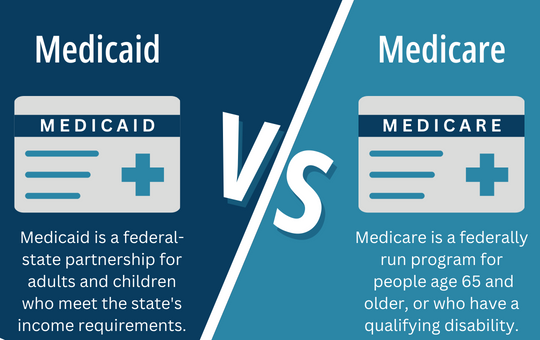 Before the Affordable Care Act, Medicaid only covered a small number of adults and largely excluded childless adults and workers in low-wage jobs. In 2014, the federal government gave states the option to expand Medicaid coverage to adults age 19-64, with incomes up to 138 percent of the federal poverty level. This additional coverage is known as Medicaid Expansion. Forty-one states, including Montana, have expanded Medicaid.[i]
Before the Affordable Care Act, Medicaid only covered a small number of adults and largely excluded childless adults and workers in low-wage jobs. In 2014, the federal government gave states the option to expand Medicaid coverage to adults age 19-64, with incomes up to 138 percent of the federal poverty level. This additional coverage is known as Medicaid Expansion. Forty-one states, including Montana, have expanded Medicaid.[i]
In 2015, the Montana Legislature passed the Health and Economic Livelihood Partnership (HELP) Act to expand Medicaid coverage.[ii] Because Medicaid previously only covered certain groups of people living on extremely low-incomes, the program had previously excluded many Montanans who worked low-wage jobs or worked part-time due to a disability or because of caretaking responsibilities. The HELP program saw immediate success, and for the first-time thousands of Montanans were able to afford health care.
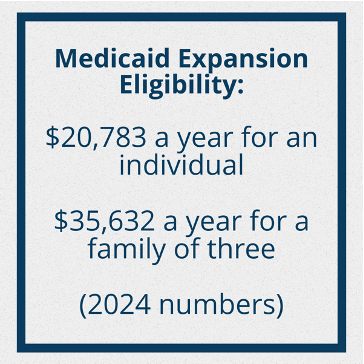 In 2019, the Montana Legislature voted to continue Medicaid expansion.[iii] This bill included a few changes to the program, including work reporting requirements. However, the federal government did not approve the work reporting requirements, and they have not gone into effect. Montana has also ended the requirement put in place in 2015 that some Medicaid expansion enrollees pay premiums. The 2019 legislation included a termination clause, which scheduled Medicaid expansion to sunset on June 30, 2025.[iv] Lawmakers must take action to renew Medicaid expansion before this date to ensure the continuation of health care coverage for 90,000 Montanans.
In 2019, the Montana Legislature voted to continue Medicaid expansion.[iii] This bill included a few changes to the program, including work reporting requirements. However, the federal government did not approve the work reporting requirements, and they have not gone into effect. Montana has also ended the requirement put in place in 2015 that some Medicaid expansion enrollees pay premiums. The 2019 legislation included a termination clause, which scheduled Medicaid expansion to sunset on June 30, 2025.[iv] Lawmakers must take action to renew Medicaid expansion before this date to ensure the continuation of health care coverage for 90,000 Montanans.
The number of Montanans on Medicaid expansion fluctuates with the economy and other circumstances, ranging from 87,000 in 2020 to 125,000 in 2023.[v] Individuals in need of health care coverage can apply in person at state-run Offices of Public Assistance, by mail, via telephone, or by filling out an on-line application on the state’s website. Additionally, some individuals realize they are eligible for Medicaid when applying for health insurance on the Federal marketplace (www.healthcare.gov). If an individual arrives at a hospital in need of care, the hospital may also make presumptive eligibility determinations for short-term, temporary coverage.[vi] Presumptive eligibility allows eligible individuals to receive Medicaid coverage while their application is still being processed. States have 45 days to process income-based Medicaid applications, and individuals may be covered for up to 90 days prior to the start of their enrollment.[vii]
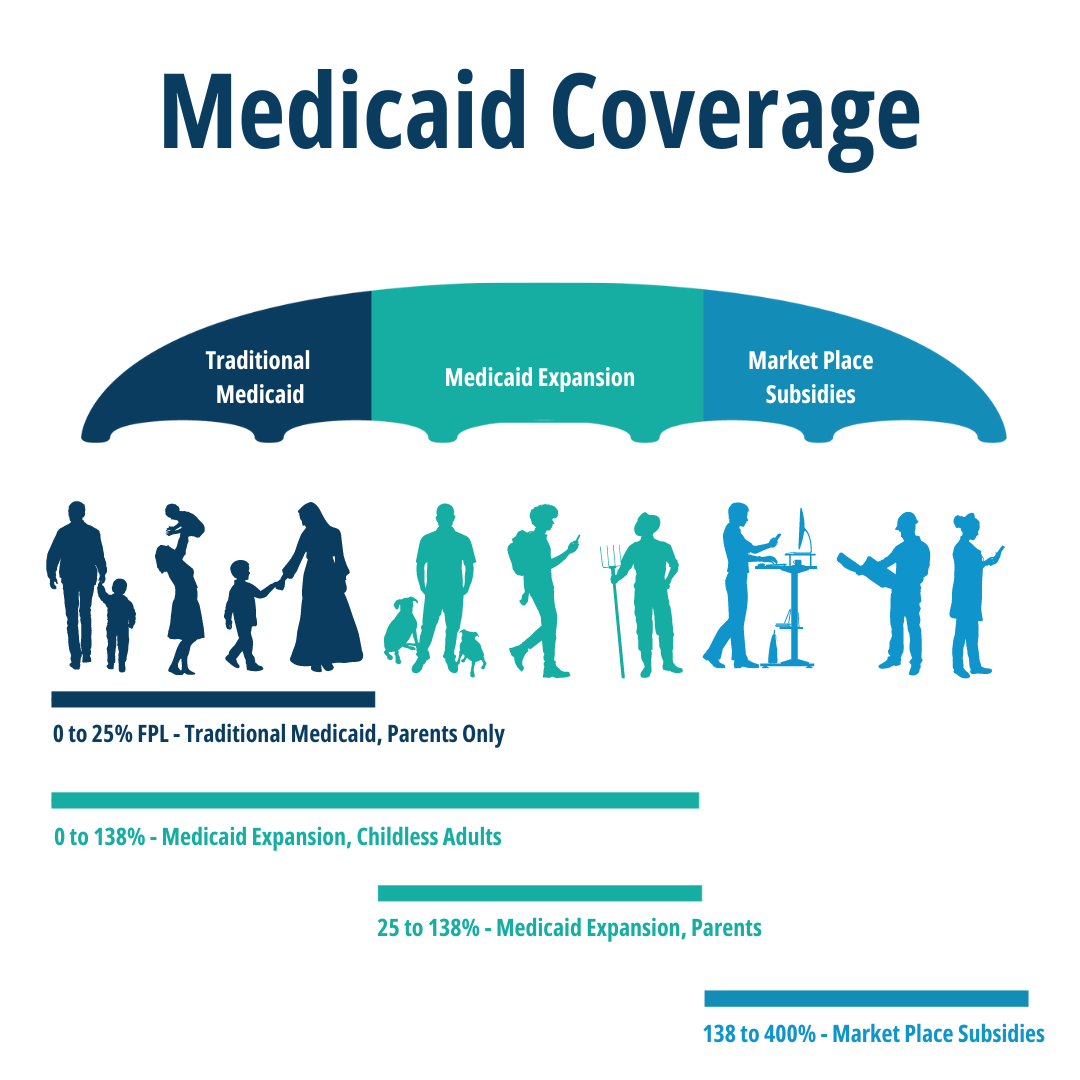
The federal government requires states to provide certain types of care under their Medicaid programs, including: physician and hospital services; rural health clinic and federally qualified health center services; early and periodic screening, diagnostic, and treatment services; family planning, nurse midwife, and birth center services; laboratory and x-ray services; certified pediatric and family nurse practitioner services; transportation to medical care; and tobacco cessation counseling for pregnant women.[viii] Montana also elects to cover: ambulance services; outpatient drugs; dental and denturist services; physical and occupational therapy; speech-language pathology; eyeglasses and optometry; home and community-based services; personal assistance services; targeted case management; community first choice services; and hospice.[ix]
Medicaid expansion has helped thousands of people access necessary preventative care, including cancer screenings and diabetes screenings. In 2021 alone, more than 61,000 enrollees accessed preventative care services, 34,000 received mental health services, and 5,500 received treatment for substance use disorders.[x] Numerous studies point to the ways Medicaid expansion improves health of the recipients, including better self-reported health, reduced medical debt, and fewer premature deaths.[xi]
Not only does Medicaid expansion help individuals access care, it has helped support a stronger health care system across the state. Expansion strengthened the health care sector, and has led to more jobs and higher earnings for health care workers.[xii] Medicaid is widely accepted in Montana, with 93.5 percent of physicians accepting new patients taking Medicaid patients.[xiii]
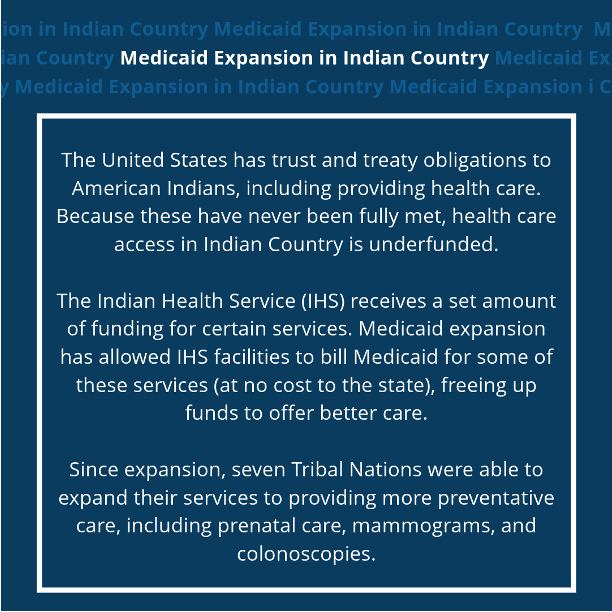 For example, Medicaid expansion has also improved access to substance use disorder (SUD) treatment across the state, with the number of SUD provider locations in Montana growing from 95 to 208 post-expansion.[xiv] In total, funding for SUD treatment in Montana grew from $5.1 million to $24.3 million. Additionally, expansion keeps hospitals open and accessible to local residents by reducing the amount of uncompensated care costs that hospitals must absorb.
For example, Medicaid expansion has also improved access to substance use disorder (SUD) treatment across the state, with the number of SUD provider locations in Montana growing from 95 to 208 post-expansion.[xiv] In total, funding for SUD treatment in Montana grew from $5.1 million to $24.3 million. Additionally, expansion keeps hospitals open and accessible to local residents by reducing the amount of uncompensated care costs that hospitals must absorb.
Medicaid expansion is particularly essential for rural communities. Two-thirds of Medicaid expansion enrollees live in rural communities, and uncompensated care at critical access hospitals and rural health clinics has declined by 35% since Medicaid expansion passed.[xv] While 136 rural hospitals closed nationwide between 2010 and 2021 (74 percent of those were in non-expansion states), no rural hospitals have closed in Montana since the beginning of Medicaid expansion.[xvi]
The vast majority (76%) of Montanans on Medicaid work or are in school, with almost all of the remainder taking care of a family member or living with an illness or disability. In total, 97 percent of enrollees work or have a reasonable impediment to work. For the small remainder, Medicaid provides a vital safety net.[xvii]
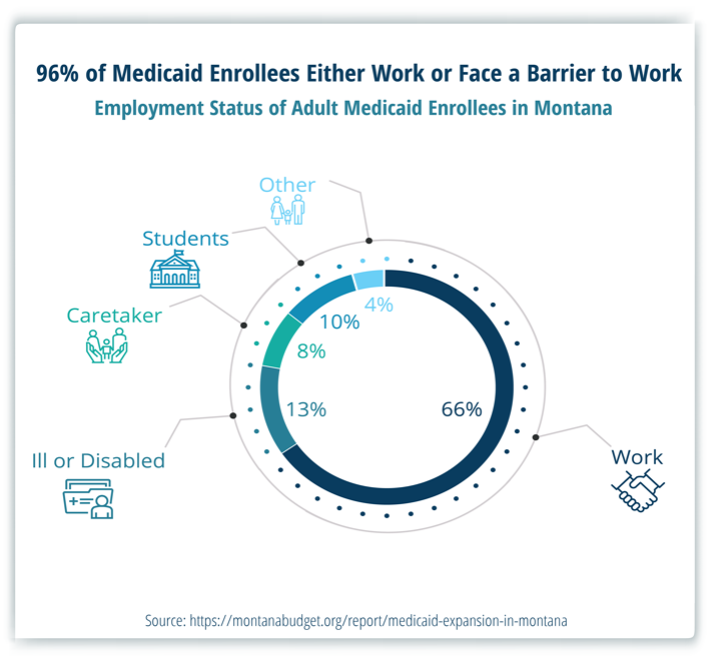
Medicaid expansion is essential for individuals who are facing hard times, and most people stay on the program for only a short period.[xviii] For people living with chronic illnesses or disabilities, affordable health care can help improve access to jobs. People living with disabilities in states that expanded Medicaid were significantly more likely to be employed than those in states that did not, research shows.[xix]
Employers also benefit from Medicaid. Expansion supports businesses who are too small or cannot afford to offer their workers health insurance. Six in 10 Montana businesses employ a worker on expansion.[xx] Many of the workers on Medicaid expansion work in Montana industries vital to our economy, including hospitality, agriculture, construction, and child care.[xxi] Medicaid expansion helped create and sustain over 7,500 new jobs, generated an estimated $475 million in new personal income, and fueled $775 million in economic activity in 2022.[xxii]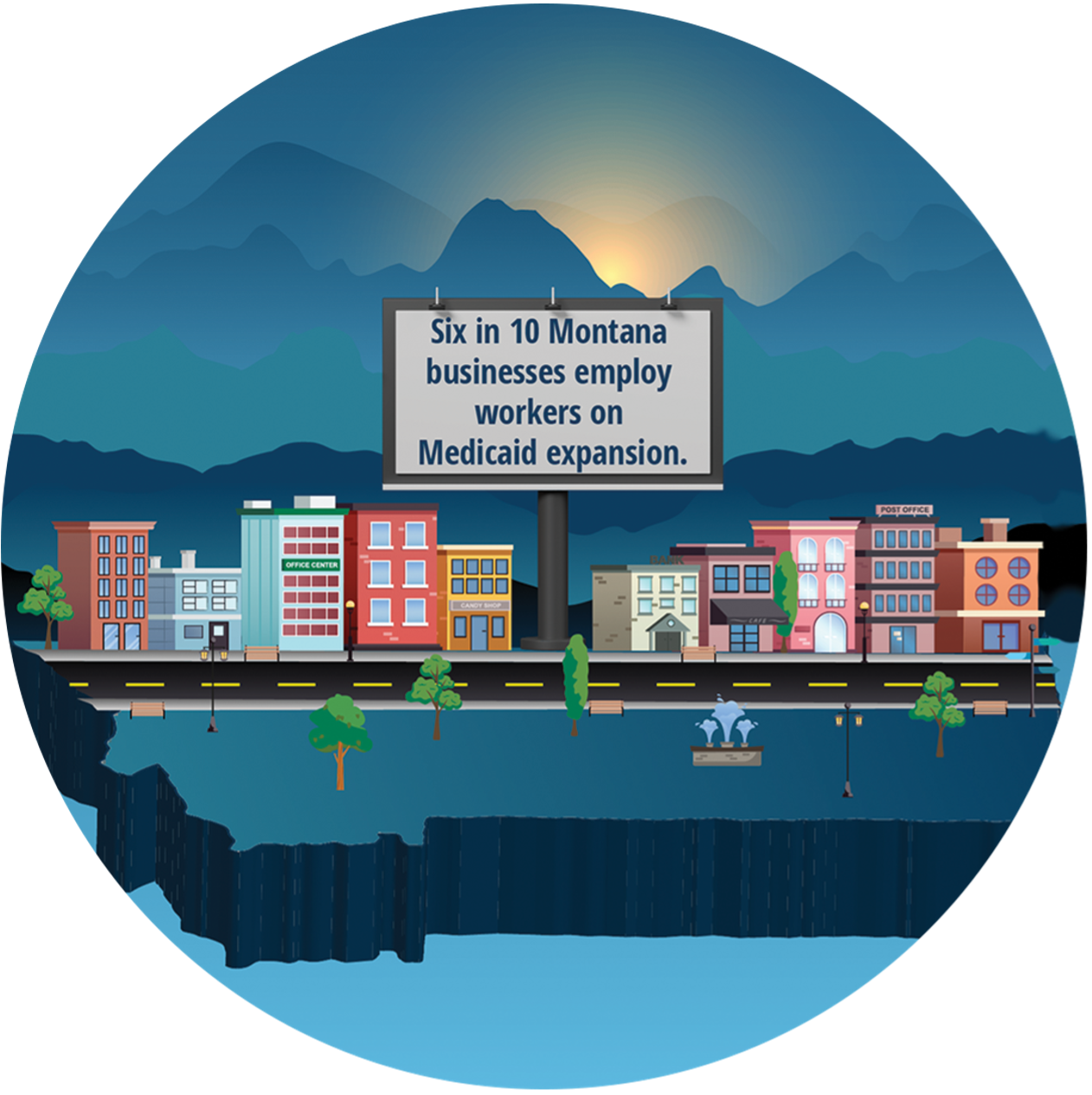
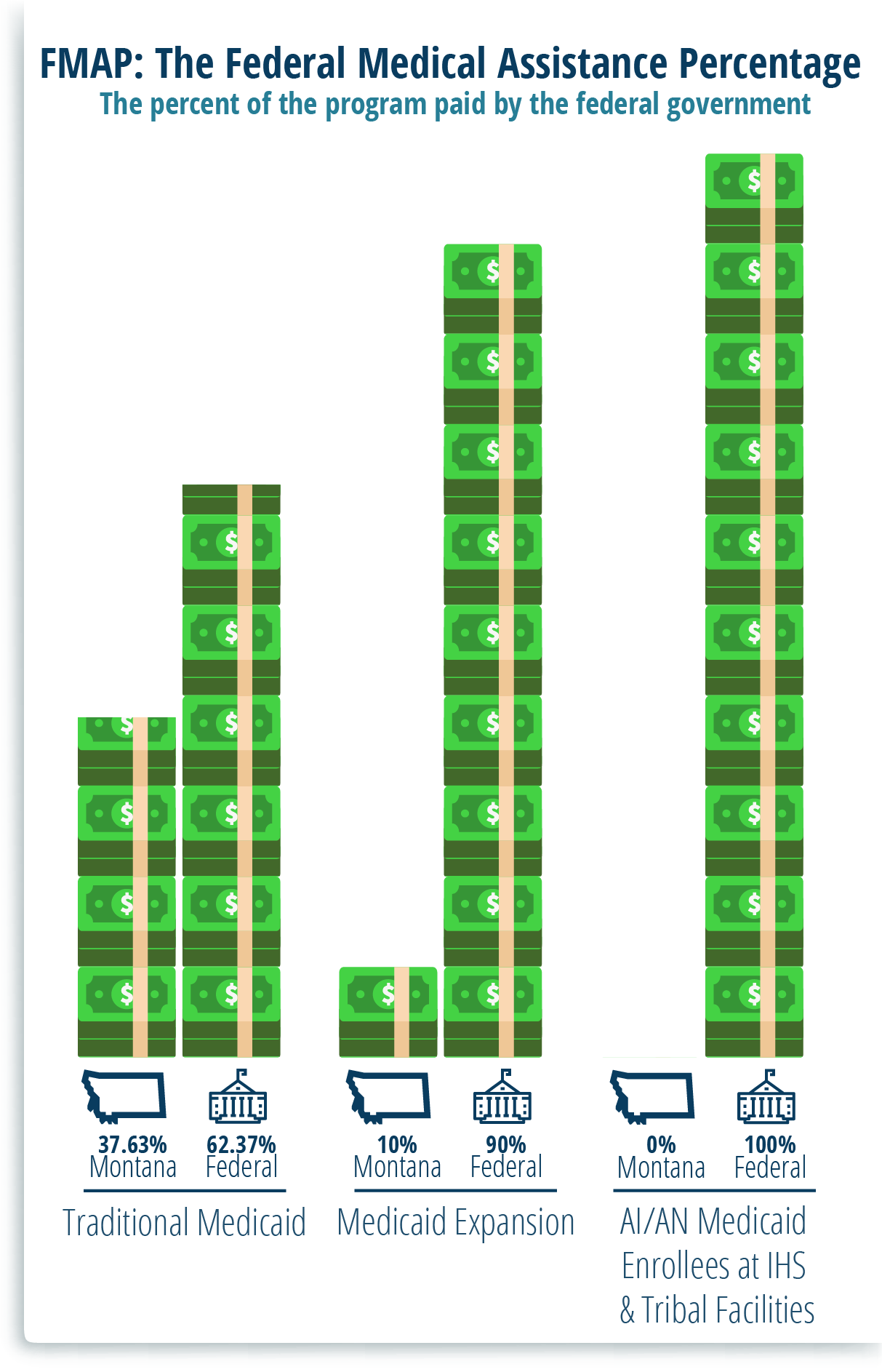 Medicaid expansion is funded by the state and federal government, with the federal government paying 90 percent of the costs. The federal government pays a significantly lower percentage of costs for traditional Medicaid.[xxiii] When enrolled tribal members on either traditional Medicaid or Medicaid expansion seek care at Indian Health Service or Tribal Health Clinics, the cost is fully paid for by the federal government.[xxiv]
Medicaid expansion is funded by the state and federal government, with the federal government paying 90 percent of the costs. The federal government pays a significantly lower percentage of costs for traditional Medicaid.[xxiii] When enrolled tribal members on either traditional Medicaid or Medicaid expansion seek care at Indian Health Service or Tribal Health Clinics, the cost is fully paid for by the federal government.[xxiv]
While the state pays roughly 10 percent of the costs of Medicaid expansion, state costs are partially offset by savings in other areas. After expansion, states need to spend less of their state budget on uncompensated care to hospitals, traditional Medicaid, and corrections. In the state fiscal year 2022, the state estimated that Medicaid expansion saved the state $27 million because of a higher federal match rate for some existing Medicaid populations who were transferred to Medicaid expansion, offsetting a quarter of the expansion costs.[xxv] In total, Medicaid expansion continues to infuse over $900 million in new federal spending into Montana annually, creating jobs and economic activity.[xxvi]
Medicaid expansion supports Montana’s health care system, strengthens our labor force, improves our economy, and supports access to care for all Montanans. If expansion is not renewed in 2025, our health care system risks drastic consequences, including provider closures and rising rates of uninsurance. Montana lawmakers should permanently renew Medicaid expansion in 2025 to keep Montanans healthy.

MBPC is a nonprofit organization focused on providing credible and timely research and analysis on budget, tax, and economic issues that impact low- and moderate-income Montana families.